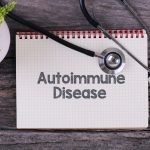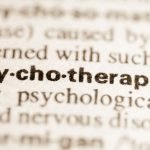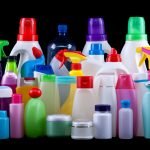Two factors cause 95% of chronic illness: diet and environment. Indeed, cancer, cardiovascular disease and autoimmune diseases may all bear the same cause: toxicity and deficiency created by dietary habits and environmental toxins. Toxins from the environment are overwhelming the processing and eliminating capacities of the body and accumulate in various organs and systems, creating a wide array of symptoms and illnesses. Plaque on the arteries and colon cancer may be two manifestations of the same phenomenon: toxin accumulation and storage in different organs. Moreover, toxicity creates deficiency by altering normal biochemistry: Heavy metals substitute for minerals, and chemicals alter the genetic code. In addition, our food supply is depleted because it is grown on deficient soil and because processing destroys the vital nutrients. Over time, liver detoxification becomes inefficient, the immune system is overwhelmed, cells do not produce enough antioxidants to quench free radicals, plaque builds up in the blood vessels (leading to stroke and cardiovascular disease) and stockpiling of toxins causes genetic mutation (and thus, cancer occurs).
Education: A Priority
Most Americans trust and assume that food distributed by large companies is healthy. It takes an educated mind to suspect the contrary and realize that our food supply is poisoned. Not only is our food supply poisoned, but also the air we breathe, the water we drink and the objects we touch.
Our main work today as true physicians dedicated to treating the cause of disease is to educate patients on the dangers of processed food, chlorinated water, cosmetics, pharmaceutical drugs and household products. We need to help patients transition to whole organic foods and to avoid toxic products.
Prevention is the best medicine, and we need to get organized globally, for the problem is a universal one. Our medicine must go beyond individual care because illness is caused by global problems. Illness in the Inuit population in Canada may be caused by industrial negligence in China. Wind, air and rivers do not follow a country’s boundary lines, and everyone’s health is in the hands of industries that pollute and governments with a short-term view of life on the planet. Everyone knows how challenging it can be to treat cancer, and how many people die prematurely. One-to-one education, public talks and radio shows will eventually compete with the insidious mainstream dogma and contribute to the disappearance of companies marketing junk food. A popular white bread manufacturing company recently going out of business is a promising sign that more and more people make healthy choices, and we can only hope that lifestyle changes will slowly undermine other troubling industries, as well.
Lifestyle Counseling and Psychotherapy: A Must
Lifestyle changes are not easy for most people, especially dietary changes. The commercial food supply contains addictive substances and excitotoxins, such as white sugar or flavor enhancers that create cravings. MSG and aspartame overstimulate taste buds and activate the pleasure center in the brain in the same way as any drug does, by increasing dopamine levels. Addiction settles in, because the brain wants more of the drug to keep the pleasure level up and people keep eating, even though they are full. Processed food has turned many Americans into addicts. Addiction is even harder to overcome for those raised on junk foods and those whose mother was eating junk foods during pregnancy. These people may need long-term psychotherapy to understand their emotional association with their foods of choice.
Be a Role Model
Each one of us must become an example of good health and healthy habits to inspire patients to make healthy choices. How can patients trust their doctor to help them quit alcohol if this doctor smokes and has not overcome his own addiction? We must start with ourselves.
Awareness: The Key
We must teach awareness as a tool to supersede bad habits. We must lead patients to their deep self, the quiet observer, so that they may regain power over themselves. We must help them to accept the idea that they deserve to break away from their engagement in the world through action or reaction for a few minutes and watch. This way, they give unconscious feelings a chance to emerge to their consciousness and they have a choice: Continue with their old habits or create a new response.
Forming New Habits
It takes repetition to create a new habit, and awareness and caring to break an old one. It is controversial whether creating new habits is necessary at all or if it is preferable to live in the moment and respond to each event in a new, creative way. However, some habits will form by themselves. By the force of repetition, the new pathways in the brain will promote the new behaviors.
Once the thought has settled in that a change needs to be made, it is just a matter of decision making and planning, such as remembering to take a reusable bag when going to the store; recycling old plastic containers and replacing them with glass; and installing a water filter to avoid using/purchasing plastic bottles.
About Toxins
More than 24,000 toxins exist in our environment: in our homes, offices, schools and playgrounds. Toxins are poisons. Poisons are defined by the Dorland dictionary as “any substance which, when relatively small amounts are ingested, inhaled or absorbed, or applied to, injected into or developed within the body, has chemical action that may cause damage to structure or disturbance of function, producing symptomatology, illness or death.” Toxins include chemicals and their metabolites, and man-made products such as olestra and artificially hydrogenated oils.
Chemical Toxins: Endocrine Disruptors
Chemical toxins can mimic estrogen or boot out iodine from the thyroid. They produce disturbance by blocking, stimulating or destroying cell receptors, destroying cell-to-cell communication and displacing minerals. Their mechanism of action has recently been reviewed (Damstra, 2002). The World Health Organization-sanctioned review clearly shows that endocrine disruptors, especially those with estrogenic activity, act via alterations in gene expression and that many of these changes are imprinted and remain even into the next generation.
Chemical Toxins: Genetic Mutations
These environmental toxins can mutate the DNA in our bodies, disturbing the normal nucleotide sequence. A means of repairing DNA damage is vital to maintaining the integrity of the genetic blueprint. The enzyme, DNA ligase, repairs the millions of DNA breaks generated during the normal course of a cell’s life and usually manages to repair the mutated DNA. However, when these repair processes go awry, cells can become cancerous.
Detoxification: Reversing Biochemical Damage
Detoxification is necessary to speed up the elimination of toxins that have accumulated and to insure success of lifestyle changes.
Testing for amino acids, hormones, minerals, vitamins and heavy metal burden will give the best appropriate strategy for treatment, but they are not always necessary, as every one of us is toxic. Nutrition with large quantities of carrot and green juices; and a plant-based, organic, raw food diet with a lot of plants from the brassica family should be used for general detoxification. In addition, more specific detoxification procedures such as the infrared sauna, oral or rectal chelation, hydrotherapy and herbal treatments can be used adjunctively.
Maya Nicole Baylac, ND has more than 25 years of psychotherapy experience. She is a fasting-certified member of the International Association of Hygienic Physicians (IAHP), and is a certified Gerson therapist. Dr. Baylac currently practices privately as director of Hawaii Naturopathic Retreat Center in Keaau, which specializes in therapeutic fasting, Gerson Therapy and mind-body medicine.
Reference
Damstra T: Potential effects of certain persistent organic pollutants and endocrine disrupting chemicals on the health of children, J Toxicol Clin Toxicol 40(4):457-465, 2002.





